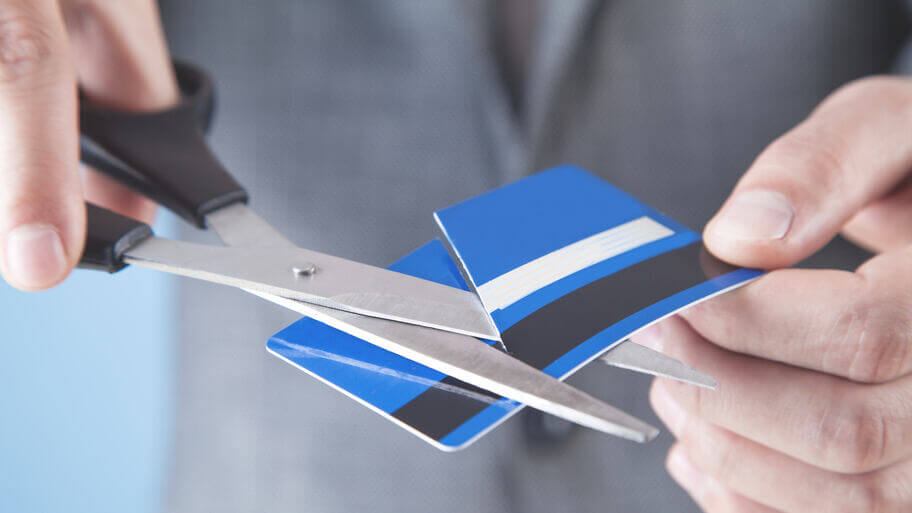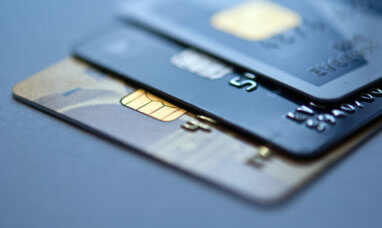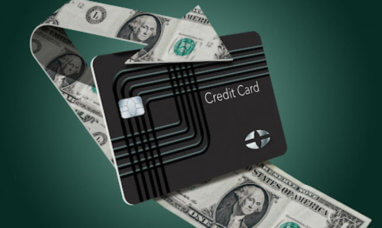Credit cards can be very useful for building credit, giving you a convenient way to pay and even allowing you to earn rewards if you handle them right.
Unfortunately, they can also help you spend yourself into a problem. In addition to interest, fees can add up, making the card very expensive. Here are some credit card red flags to avoid.
Red Flags to Look Out for in Credit Cards
To help you choose the best card for your situation, here’s our list of five red flags to avoid when picking a card.
1. Expensive Fees
We’re all used to paying fees for our financial services and credit cards. But, instead of just taking them in stride, do your due diligence first. With the right card in your wallet, may not have to pay fees at all.
That being said, it is not uncommon for issuers to charge an annual fee. If you have a lower credit score, it may be nearly impossible for you to qualify for a card with no fee. Plus, some of the most lucrative rewards cards come with an annual fee, so it might be worth it to you.
But watch out for cards with high fees. People with poor credit can easily find cards with an annual fee of $50 or less. Avoid cards that charge any more than this.
Also, be aware of any other fees the company might tack on. Semi-hidden application fees, processing fees, monthly maintenance fees, or other fees can really start to add up!
2. Sky-High Interest Rates
It’s no secret that credit card interest rates can get high. On average, the annual interest rate on a credit card is 16.99% — and there are plenty of cards that charge more.
Furthermore, credit card companies usually advertise their lowest rate, but typically charge more than one APR for different types of purchases. For example, cash advances usually carry a higher interest rate and perhaps an initial fee when taking the advance.
If you have poor credit, the situation is a bit more grim. You may only qualify for cards with interest rates around 25%-30%. You can see how carrying a balance on cards like this would get terrifyingly expensive fast!
Furthermore, many credit card companies offer low introductory rates. After a set time period, the interest rate automatically goes up — sometimes way up.
3. Credit Limits That Curb the Usefulness of the Card
Credit card companies often advertise a range of credit limits for their various offerings. Which limit they offer to you will depend on your credit score.
However, a low limit can be constricting and even negatively affect your credit score.
Credit utilization indicates how much you’re using of the credit that is available to you. For example, if you have a $1,000 credit limit and you owe $500, your credit utilization rate is 50%.
A high credit utilization rate negatively affects your score. Lenders assume that if you are maxing out your credit, you may be stretching yourself too thin.
Now imagine that you have a card with a credit limit of only $300. It’s really hard to keep your utilization rate under 30%.
One way to get around this is to find out when your issuer reports utilization. For example, if you have a Discover card, ask, “when does Discover report credit utilization?” Plan to make your payments a few days before that date in the billing cycle. Then they will report a lower utilization.
Best Credit Cards of April 2024
4. They Don’t Report to All Three Agencies
There are a number of various credit reporting agencies, and your issuer won’t report to all of them. However, there are three big ones — Experian, TransUnion, and Equifax.
If you’re trying to build your credit, your best bet is to choose a card that reports to all three. Cards with incomplete reporting can mess up your chances of getting approved for a loan.
For example, what if your credit card company only reports to Experian? You go to apply for another product, but the new lender pulls your report from TransUnion. Your credit-building efforts won’t count for much if they don’t see the information.
5. You Can’t Upgrade the Card
When does a secured credit card become unsecured? There isn’t a set time frame, though many cards offer the ability to move to an unsecured card after you fulfill a certain obligation — such as completing a certain number of on-time payments.
But some cards don’t allow you to upgrade. For example, a direct path from a USAA secured credit card to an unsecured card doesn’t exist. You can use the card to build your credit, then apply for an unsecured card, but there is no direct method.
Some cards also offer the potential for a higher credit limit as your credit improves. This will further improve your score by giving you more room to borrow money while still keeping your credit utilization rate low.
You may quickly outgrow secured cards that don’t come with any upgrade options. However, closing them could damage your credit. If the card has an annual fee, you could be faced with either taking the hit to your credit or paying the fee.
Choosing the Best Card for You
There are so many different options for credit cards out there. Even if you have poor credit or no credit, there are cards that will help you build your score and qualify for better rates and terms in the future.
However, you have to be careful not to choose a card that works against you. These five red flags give you an idea of what to watch for, but do not make up a comprehensive list. There are other factors that you need to be aware of when shopping around.
For example, when looking at your credit score, be aware that your score is not always the same. It varies a little depending on the factors important to the lender.
Plus, there are different scoring models that can make it confusing. Just compare Experian’s National Equivalency Score vs. FICO scores, and you’ll see what we mean.
Regardless, there is a viable option out there for you; it just takes a bit of digging to find!
Featured Image: Twenty20








